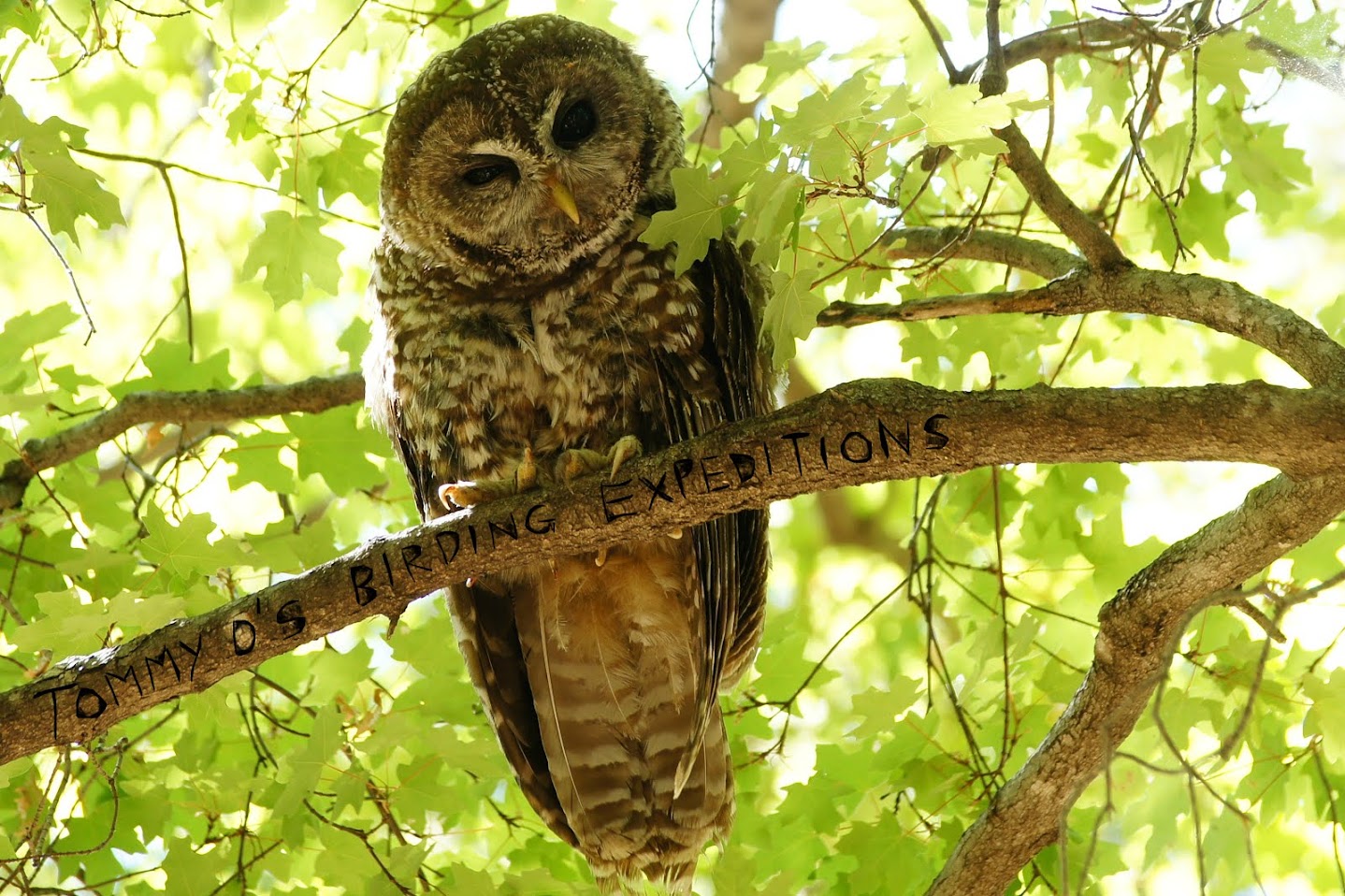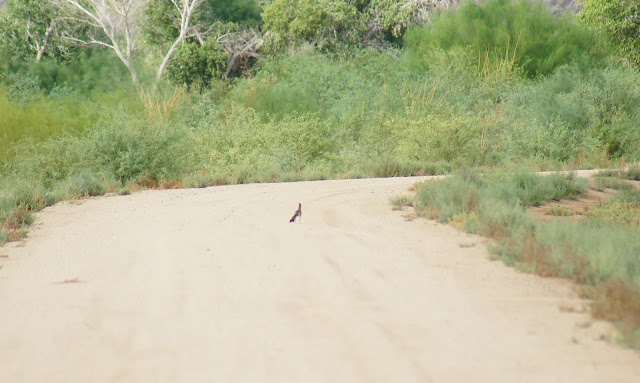I'll start with the Glendale Recharge Ponds. For awhile, one of the basins was filled with water out of the six. The basin started to have deep water levels, which made shorebird diversity low with rather boring birding results. Luckily, that basin was drained and Basins two and three have been filled with beautiful and accurate shorebird appropriate levels. Shorebirds are everywhere and the birding is great!
Being a fan of shorebirds and loving to see a diversity of shorebirds here in late summer/early fall annually, I like to give this place multiple visits. Over the last few years, a few Short-billed Dowitchers have made it to the ponds annually. Last fall in 2012, I found a small flock of five Short-billed Dowitchers. Most of the Short-billed Dowitchers that make it to Arizona in the fall are juvenile birds. They have a very distinctive plumage when young that help separate them from the Long-billed Dowitcher at all times. The pattern of the bird is very bright, often a buffy-orange wash on it's breast and most importantly a striking back, that appears to the eye as being "tiger-striped" overall. By looking at the Short-billed Dowitcher's tertial feathers, the "tiger-striped" appearance continues down to those feathers as well. This is something the Long-billed Dowitcher will never show. Shorties also have a lot of white on their tails that contrast with the black, Longies not so much. The birds showing adult plumage are very difficult to distinguish in the field, and it takes a lot of careful study and experience to separate them visually. It is something I haven't really been able to practice. Good thing for the juvenile plumaged birds. However, both species are entirely different by voice, the best trait in identification. When the Short-billed Dowicher says, "two-two-two", you know you've got a good Arizona shorebird! And this week, a juvenile Short-billed Dowitcher once again found Glendale Recharge Ponds!
Short-billed Dowitcher
Dowitchers are roughly the same size of, but slightly smaller than the famous Killdeer.
The Short-billed Dowitcher also appears to have a much more flatter back when foraging than the fat Long-billed Dowitcher.
Here is a close-up of the "tiger-striped" tertials and the tail (note the high amount of white)
Another good shorebird that is fun to see at the Glendale Recharge Ponds and anywhere else is the tiny and often-overlooked Snowy Plover. These little guys are rather rare in Arizona, but do show up annually. The Glendale Recharge Ponds have been one of those locations where the Snowy Plovers have seemed to favor annually. They can be very hard to detect due to their small size. When found, they are simply fun to watch and observe. This week, a Snowy Plover also found the Glendale Recharge Ponds!
Snowy Plover
The Western Sandpiper is one of the more common shorebirds to be seen at the Glendale Recharge Ponds during this time frame. They are a good looking shorebird and are also fun to watch. Unlike the Snowy Plover, they are easy to spot and are usually a lot closer to the path.
Western Sandpiper
Here is the Western flock!
The Glendale Recharge Ponds are also home to many raptors annually. When I pulled up to the parking lot, this small raptor had it's back turned to me.
It's the American Kestrel, one of our most common raptors. It's also one of the coolest raptors that we all don't appreciate as much as we should, myself included. Close encounters with these guys are very awesome. This American Kestrel male was indeed a gentleman, and he kindly let me take his picture.
Male American Kestrel
The Tres Rios Wetlands have wetlands! Too much! Just kidding on that, there is never a such thing as too much habitat. The Tres Rios Overbank Wetlands is the best birding location to be found in Phoenix (yes, even better than Gilbert Water Ranch), and an overwhelming amount of birds may be found there in any visit. It's endless ponds and riparian plantings around the ponds attract waterbirds and migrants. I really do have it good that it's so close to home! Here's one of those such ponds and it's surrounding habitats at Tres Rios.
It's not everyday you start your day off birding with an awesome highlight in the first few minutes. At Tres Rios, sometimes that happens because of the bird abundance. In the case this time, it was a Virginia Rail. This rail was perched up in the open on the reeds, almost perching like a Least Bittern would. I thought I was seeing this, but these photographs show that I wasn't. I don't see Virginia Rails much, so this was a treat to observe this elusive waterbird up so close. There is no way I can count on a Virginia Rail visual anytime soon.
Virginia Rail (Are you kidding me!!)
Another fun thing that is fun about Tres Rios is that you may see two totally different species perched side-by-side to each other. It really represents the diversity of this location. In this case, check out this Great Blue Heron and Peregrine Falcon.
The Peregrine Falcon is quite the sight-anytime, and anywhere. It's been recorded as the fastest bird in the world. I've witnessed it make diving kills on several occasions, and I'm a believer. Tres Rios is a very reliable place to find this species.
Peregrine Falcon
I then got really lucky as I saw this Barn Owl flying around. It eventually looped around and flew right past me. With owls, most have to settle on perched shots, there aren't many opportunities to get flight shots. It's been awhile since I've gotten to photograph a Barn Owl, and this was a really cool treat for me.
Barn Owl
I then stumbled across this young Sora. This was the second rail I was able to photograph during the day!
Sora
And here's a few more species before I get to the discovery of the day........
White-faced Ibis
American Coots
Belted Kingfisher
Common Ground-Dove
Yellow-headed Blackbird
As I looked on the dirt road in front of me, there was the Greater Roadrunner. The Roadrunner was shy and hard to approach, as usual, but seeing them is always cool!
Greater Roadrunner
My sighting of the day came when I saw a familiar shape in a cottonwood. It was a Red-shouldered Hawk that I discovered here in the winter. It was a young bird when I found it last year, and apparently, it never left the area. It is a nice looking adult now. This is the picture I was able to get of it. Poor, but still evident.
Red-shouldered Hawk
After the Tres Rios outing, I went to a neighboring pond nearby, at the southeast corner of Broadway and 107th Avenue. This pond is small, but small ponds are known for turning up some cool highlights like these....
Burrowing Owls (my second photographed owl of the day!)
Greater Yellowlegs and Wilson's Phalarope
White-faced Ibis
And this marks the end of Low Budget Birding: Part Three. Despite the financial circumstances, I have had some awesome highlights. As I finish up this post, I'm asking myself: "Is Low Budget Birding that bad after all?" The answer is no, especially with awesome highlights in birds like this, and so close to home. There will likely be a few more posts in this series...stay tuned!









































































